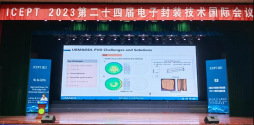According to Jiwei.com, Shanghai Belling recently stated in an institutional survey that the company has completed pre-research on 3Gsps sampling rate ADC products and is expected to launch mass production products within a year. The company is developing ADC-related products with higher sampling rates.
In terms of R&D, Shanghai Belling said that in recent years, the company has continued to attach importance to R&D team building, expand the scale of the R&D team, and establish new product projects and R&D layout in the fields of industrial control and automotive electronics. In addition, Shanghai Belling said that based on market and customer needs, the company has developed a series of dedicated microcontroller SoC products in the field of optical communications and has achieved mass production. Shanghai Belling optical module SoC chips are actively introduced to multiple customers, involving wireless access, data communications, GPON, Combo PON and other application projects. Shanghai Belling has laid out SoC products dedicated to high-end optical modules for datacom, and will increase R&D investment in the future to develop higher-integrated optical module SoC products.
Shanghai Belling further pointed out that the Chinese market is the world's largest semiconductor market, and "domestic substitution" is an important driving force for the rapid development of the domestic semiconductor industry in recent years. Shanghai Belling's IC products are mainly deployed in analog circuits, and are constantly iterating to higher technical levels. At the same time, Shanghai Belling continues to launch dedicated SOC products for key market areas such as automotive electronics, industrial control energy storage, building intelligence and home appliances, and maintains a good development momentum.
In terms of new energy layout, Shanghai Belling said that the company has deployed all-round product business in the field of automotive electronics in recent years, involving power management, power devices, motor drives, EEPROM memories, isolator products, interface chips, data conversion products and other fields. The R&D layout provides a rich series of products for automotive lighting, automotive ignitions, automotive air conditioning PTC, main drive and other applications for fuel vehicles and new energy vehicles, and continues to expand other automotive electronics segmentation application platforms. At present, the number of products and revenue scale in Shanghai Belling's automotive electronics field are in a stage of rapid growth.

